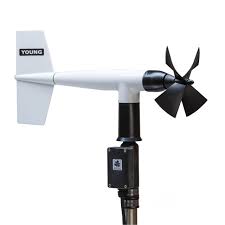Defeat Demand Charges, Reduce Electricity Costs
Sensors,
Meters, and Apps
Some businesses pay a "demand charge" in addition to a standard electricity use rate. This charge is related to the highest use of electricity over an interval, such as 15 or 30 minutes. Or the charge could be related to prime-time use. Why do utilities apply demand charges? They need to meet the peak electricity use for their customers. If you pay demand charges, this might be something you can avoid.
An energy management system, such as SiteSage or inView, can provide insight to help reduce demand charges.
Peak Demand Alerts
One simple way to control energy costs is to find out when power use crosses a threshold. The screen below allows alerts to trigger based on a percentage of monthly threshold or an absolute value.
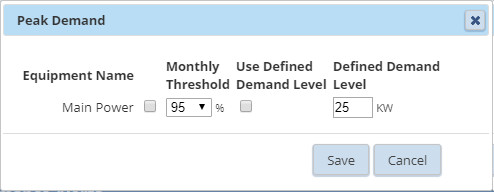
Power Use by Circuit
Energy management systems can measure electricity use for the entire building, plus individual circuits. This chart shows what equipment contributes to peak electricity use.
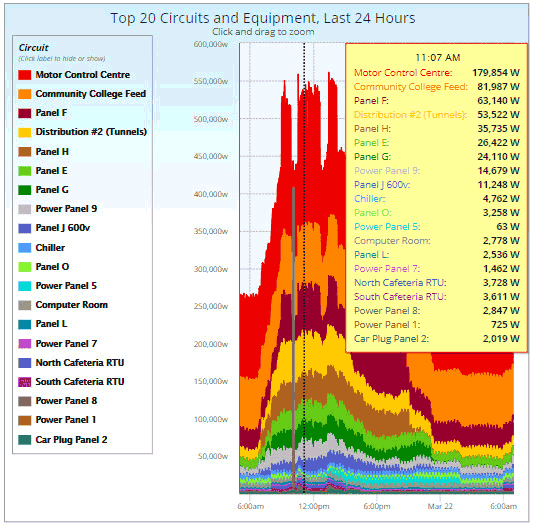
Equipment Startup and Runtimes
Can equipment be turned on at different times rather than all at once? Often, when equipment is turned on, electricity use peaks before stabilizing. Imagine multiple pieces of equipment all getting flipped on at the same time.
Consider staggering the start times or even changing operating schedules entirely.
Energy-Efficient Equipment?
Is a piece of equipment using more electricity than it should be? Check the manufacturer’s specifications and compare against energy use charges found in the energy management system.
Equipment using too much electricity may need maintenance, settings changes, or possible replacement.
The chart below shows the top energy users during the demand charge period.
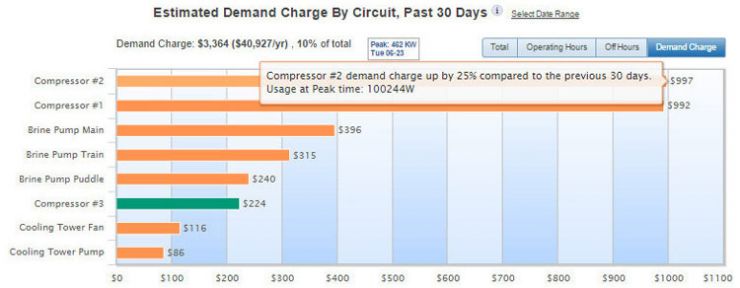
Demand Charge Alerts
Another way to avoid demand charges is to know when these situations are happening. An energy management system typically offers email and text alerts. These alerts can be based on a percentage change or a threshold.
When these situations arise, turn off equipment to avoid peak demand.
Track Success
After making changes to avoid demand charges, track your progress by reviewing utility bills or charting energy use in the energy management system (EMS). An EMS can easily show energy use by day, week or month.
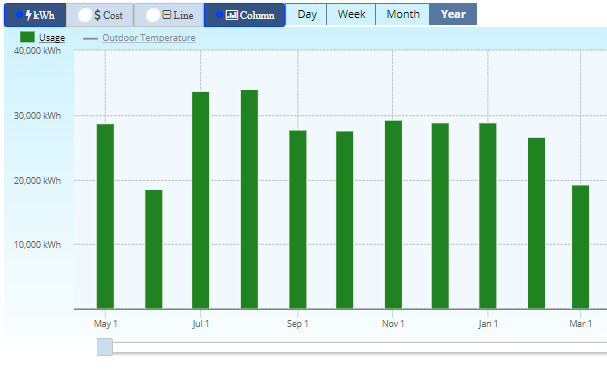
Plus, some platforms can even provide demand charge heat maps.

The “red” times and days in the chart show when and how often energy use ("demand") was the highest. Focusing on these periods can help reduce demand charges.
Reduce Demand Charges
In summary, an energy management system can show what contributes to energy bills and when. With this insight, you can:
PowerWise is a trusted provider of energy management systems. Call +1-207-370-6517 or contact PowerWise through our website today.
Contact PowerWise TodayRecent Posts
All Blog Posts >>
About PowerWise
PowerWise is a proven innovator of monitoring and control technology.
